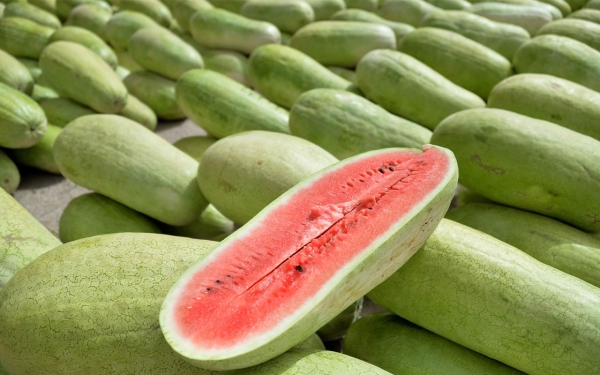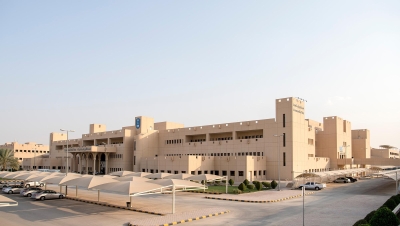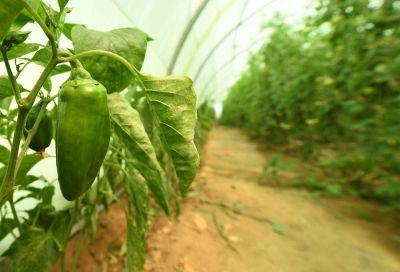


Watermelon Cultivation in Saudi Arabia, locally known as "al-habhab," is one of the agricultural crops in the Kingdom. It surpasses self-sufficiency levels with its net production from scattered farms in most regions of the Kingdom. According to the Ministry of Environment, Water, and Agriculture, watermelon crops in the Kingdom achieve a self-sufficiency rate of 99 percent. It is cultivated over geographical areas exceeding 23.45 thousand ha, with a net production reaching approximately 624,000 t.
Watermelon cultivation programs in the Kingdom
The Ministry of Environment, Water, and Agriculture organizes programs aimed at increasing agricultural crop production and achieving self-sufficiency. One of its sustainable rural development programs is the "Reef" program, which seeks to enhance the production efficiency of watermelon crops to achieve food security and increase yield during its season, which spans the summer and lasts up to six months. Locally, it is known that watermelons have two planting seasons. Farmers begin planting watermelons from the end of February until the end of March, reaching maturity and yielding fruit after ninety to 120 days. Another planting season starts in September, during which the crops are protected from frost with coverings.
Watermelon cultivation provinces in the Kingdom
Watermelon is cultivated in various provinces of the Kingdom, with the following provinces leading in production: Riyadh, al-Jawf, Hail, Makkah al-Mukarramah, Qassim, and Jazan. Watermelon is known for its numerous benefits; it is a rich source of vitamins, contains 92 percent water, and is effective in treating dehydration with its salt content. It strengthens the immune system, protects against heart disease and cancer, shields the brain and kidneys, prevents dehydration, and aids in weight loss. With the start of its harvest season, special festivals are traditionally organized, such as al-Athri Watermelon Festival in al-Lith.
Related quizzes

